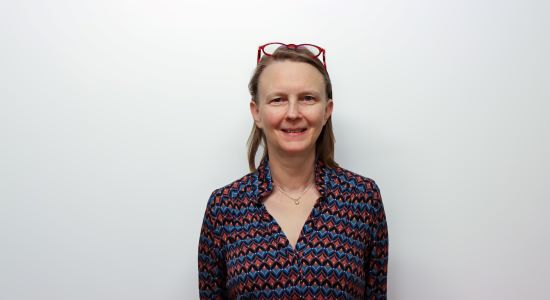To maximize the effectiveness of our collaboration and precisely evaluate your project requirements and associated costs, we kindly ask you to provide the following preliminary information.
High-Content CRISPR Screens (HCCS)
BRIC’s Core Facility for High-Content CRISPR Screens (HCCS) offers cutting-edge assay automation and cell-based screening services.
Our open-access, flexible, state-of-the-art screening platform unlocks a wide array of possibilities for automated assays, including:
- Arrayed CRISPR-Cas9 Screens
- Compound Screens
- 2D and 3D Cell Culture Assays
- Automated and miniaturized multi-well plate assays
For all these assays and more, we offer readouts in
- High-Throughput Confocal Microscopy
- High-Throughput Live Cell Imaging
- High-Throughput Flow Cytometry
- Luminescence, fluorescence and absorbance measurements
We are excited to announce that our human sgRNA library (consisting of 18847 genes) is available for either a genome-wide screen or for cherry-picking!
Our team is dedicated to supporting you at every step of your research journey, offering assistance with:
- Initial assay setup
- Automation of assays
- Screen performance
- Data and statistical analysis
- Candidate validation
Explore the full potential of your research with our comprehensive support and advanced technologies. Join us and take advantage of our resources to drive your discoveries forward!
Service
- 500 DKK/hour Academic
- 1000 DKK/hour Industrial
Instrument usage
Working hours (8am-4pm) |
Academic |
Industrial |
|
STARlet |
100 DKK/hour |
400 DKK/hour |
| ImageXpress Confocal HT.ai |
250 DKK/hour |
500 DKK/hour |
|
Echo 550 and 525 |
200 DKK/hour |
420 DKK/hour |
|
IncuCyte S3 |
10 DKK/hour and plate |
40 DKK/hour and plate |
|
EnSight Multimode plate reader |
50 DKK/hour |
150 DKK/hour |
|
MultiFloFx |
90 DKK/hour |
150 DKK/hour |
| Image analysis computer |
60 DKK/hour |
150 DKK/hour |
| Analysis computer with external |
60 DKK/hour |
150 DKK/hour |
| iQue |
250 DKK/hour |
500 DKK/hour |
Libraries
Genome wide human single guide RNA (sgRNA) library from Horizon targeting 19035 genes
Cherry picked customized sublibraries can be purchased in 384-well format.
The facility offers assay readout and liquid handling.
Microscopes
Capabilities
Fast, sensitive and flexible automated cell imaging using 4x, 10x, 20x (water immersion) or 40x (water immersion) objectives and filters for imaging DAPI, CFP, FITC, YFP, TRITC, Cy5, Cy7 and TexasRed. 60 µm pinhole confocality available and image analysis software, MetaXpress and IN Carta.
Applications
Broad range of high-content assays in 2D and 3D
Objectives
|
Objective |
Image Resolution |
|
4x Air |
1.699 µm / px |
|
10x Air |
679 nm / px |
|
20x Water |
338.7 nm / px |
|
40x Water |
169.4 nm / px |
Filters equipped
Capabilities
Long term real-time, non-invasive, quantitative live-cell analysis; 4x, 10x, and 20x objectives, HD phase-contrast, widefield fluorescence
Applications
Live-cell monitoring of e.g. proliferation, cell death, wound-healing, scratch assays.
Objectives
|
Objective |
Image Resolution |
|
4x Air |
2.82 µm / px |
|
10x Air |
1.24 µm / px |
|
20x Air |
0.62 µm / px |
Filters equipped
|
Filter set |
Excitation |
Emission |
|
Green |
441-481 nm |
503-544 nm |
|
Red |
567-607 nm |
622-704 nm |
Visit IncuCyte S3 Live-Cell Analysis System's website by clicking here.
Plate readers
Capabilities
A combined plate cytometer and plate reader with absorbance, fluorescence and luminescence capabilities, combined with brightfield and fluorescence well-imaging with single cell resolution.
Applications
Broad range of absorbance or luminescent based biological readouts; Nucleic Acid measurement.
Objectives
|
Objective |
Resolution |
|
4x Air |
3.0 µm |
Filters equipped (for microscopy)
|
Filter set |
Excitation |
|
Blue |
385 nm LED |
|
Green |
465 nm LED |
|
Orange |
525 nm LED |
|
Red |
632 nm LED |
|
Gray |
735 nm LED or Transmitted Light |
Visit EnSight Mulitimode plate reader's website by clicking here.
Automated Liquid Handling
Capabilities
Liquid transfer using disposable pipet tips (Hamilton); 384-well head; plate handling.
Applications
Automated cell splitting on multi-well plates, 2D and 3D culture fixation and staining, high-throughput screening.
Capabilities
Liquid transfer using non-contact acoustic droplet ejection (tips-free); flexible low-volume transfer for high throughput formats.
Echo 550 for all liquid classes in 2.5nL drops.
Echo 525 for non-DMSO liquids in 25nL drops.
Applications
Compound screens, dose-response curves, antibody staining, miniaturized combinatorial reagent addition, library cherry-pick, low-volume qPCR.
See more about The Echo Acoustic Liquid Handling Technology.
Capabilities
Peristaltic liquid dispensing using random access dispense (RAD) and multi-mode dispensing in 96 and 384-well microplates (1-3000 µL).
Applications
Cell seeding, reagent dispensing.
Capabilities
Microplate washing.
Applications
Washing of fixed as well as live cells.
Capabilities
The Mantis is an automated liquid dispenser that can be used to dispense accurate volumes of liquids (100nL – 5mL) into 6 well up to 1536-well plates, with an extremely low dead volume.
Applications
Cell seeding, reagent dispensing.
Flow Cytometry
Capabilities
- High throughput Flow cytometer designed to run standard 96 or 384-well plates.
- Offering Violet (6 filters), Blue (5 filters) and Red (2 filters) laser lines.
- ZERO dead volume – your complete sample will be measured without worrying about dead volume losses.
- Sample volumes down to 1 µl.
Applications
- Immunology, oncology, drug discovery, vaccine development.
- Screening assays, biomarker discovery, characterizing complex cellular populations.
Visit iQue Advanced Flow Cytometry´s website by clicking here.
Here you can read publications from the facility
Targeting uPAR with an antibody-drug conjugate suppresses tumor growth and reshapes the immune landscape in pancreatic cancer models. Metrangolo, V., Hansen Blomquist, M., Dutta, A., Gårdsvoll, H., Krigslund, O., Nørregaard, K. S., Jürgensen, H. J., Ploug, M., Flick, M. J., Behrendt, N., and Engelholm, L. H. (2025) 'Targeting uPAR with an antibody-drug conjugate suppresses tumor growth and reshapes the immune landscape in pancreatic cancer models', Sci Adv, 11(3), pp. eadq0513. https://doi.org/10.1126/sciadv.adq0513
A synthetic lethal dependency on casein kinase 2 in response to replication-perturbing therapeutics in RB1-deficient cancer cells. Bulanova, D., Akimov, Y., Senkowski, W., Oikkonen, J., Gall-Mas, L., Timonen, S., Elmadani, M., Hynninen, J., Hautaniemi, S., Aittokallio, T. and Wennerberg, K. (2024) 'A synthetic lethal dependency on casein kinase 2 in response to replication-perturbing therapeutics in RB1-deficient cancer cells', Sci Adv, 10(21), pp. eadj1564. https://doi.org/10.1126/sciadv.adj1564
Single-cell transcriptomes identify patient-tailored therapies for selective co-inhibition of cancer clones. Ianevski, A., Nader, K., Driva, K., Senkowski, W., Bulanova, D., Moyano-Galceran, L., Ruokoranta, T., Kuusanmaki, H., Ikonen, N., Sergeev, P., Vaha-Koskela, M., Giri, A. K., Vaharautio, A., Kontro, M., Porkka, K., Pitkanen, E., Heckman, C. A., Wennerberg, K. and Aittokallio, T. (2024) 'Single-cell transcriptomes identify patient-tailored therapies for selective co-inhibition of cancer clones', Nat Commun, 15(1), pp. 8579. https://doi.org/10.1038/s41467-024-52980-5
Synthetic lethal interaction between WEE1 and PKMYT1 is a target for multiple low-dose treatment of high-grade serous ovarian carcinoma. Benada, J., Bulanova, D., Azzoni, V., Petrosius, V., Ghazanfar, S., Wennerberg, K. and Sorensen, C. S. (2023) 'Synthetic lethal interaction between WEE1 and PKMYT1 is a target for multiple low-dose treatment of high-grade serous ovarian carcinoma', NAR Cancer, 5(3), pp. zcad029. https://doi.org/10.1093/narcan/zcad029
A platform for efficient establishment and drug-response profiling of high-grade serous ovarian cancer organoids. Senkowski, W., Gall-Mas, L., Falco, M. M., Li, Y., Lavikka, K., Kriegbaum, M. C., Oikkonen, J., Bulanova, D., Pietras, E. J., Voßgröne, K., Chen, Y. J., Erkan, E. P., Dai, J., Lundgren, A., Grønning Høg, M. K., Larsen, I. M., Lamminen, T., Kaipio, K., Huvila, J., ... Wennerberg, K. (2023). A platform for efficient establishment and drug-response profiling of high-grade serous ovarian cancer organoids. Developmental Cell, 58(12), 1106-1121.e7. https://doi.org/10.1016/j.devcel.2023.04.012
The Irradiated Brain Microenvironment Supports Glioma Stemness and Survival via Astrocyte-Derived Transglutaminase 2. Berg TJ, Marques C, Pantazopoulou V, Johansson E, von Stedingk K, Lindgren D, Jeannot P, Pietras EJ, Bergström T, Swartling FJ, Governa V, Bengzon J, Belting M, Axelson H, Squatrito M, Pietras A.Cancer Res. 2021 Apr 15;81(8):2101-2115. doi: 10.1158/0008-5472.CAN-20-1785. Epub 2021 Jan 22.PMID: 33483373
A high-throughput screen identifies the long non-coding RNA DRAIC as a regulator of autophagy. Tiessen I, Abildgaard MH, Lubas M, Gylling HM, Steinhauer C, Pietras EJ, Diederichs S, Frankel LB, Lund AH. Oncogene. 2019 Mar 14. doi: 10.1038/s41388-019-0783-9. [Epub ahead of print]
eIF5A is required for autophagy by mediating ATG3 translation. Lubas M, Harder LM, Kumsta C, Tiessen I, Hansen M, Andersen JS, Lund AH, Frankel LB. EMBO Rep. 2018 Jun;19(6). pii: e46072. doi: 10.15252/embr.201846072. Epub 2018 Apr 30.
Structure-Based Design of a New Scaffold for Cell-Penetrating Peptidic Inhibitors of the Histone Demethylase PHF8. Dorosz J, Olsen L, Seger ST, Steinhauer C, Bouras G, Helgstrand C, Wiuf A, Gajhede M. Chembiochem. 2017 Jul 18;18(14):1369-1375. doi: 10.1002/cbic.201700109. Epub 2017 Jun 13.
CD44 Interacts with HIF-2 to Modulate the Hypoxic Phenotype of Perinecrotic and Perivascular Glioma Cells. Johansson, Elinn; Grassi, Elisa S.; Pantazopoulou, Vasiliki; Tong, Bei; Lindgren, David; Berg, Tracy J.; Pietras, Elin Josefina; Axelson, Håkan; Pietras, Alexander. Cell Reports. 15 August 2017 Volume 20, Issue 7, Pages 1641-1653. https://doi.org/10.1016/j.celrep.2017.07.049
High-throughput siRNA screening applied to the ubiquitin-proteasome system. Poulsen EG, Nielsen SV, Pietras EJ, Johansen JV, Steinhauer C and Hartmann-Petersen R Methods in Molecular Biology: Proteostasis 2016; 1449:421-39
Cyclin F suppresses B-Myb activity to promote cell cycle checkpoint control. Klein DK, Hoffmann S, Ahlskog JK, O'Hanlon K, Quaas M, Larsen BD, Rolland B, Rösner HI, Walter D, Kousholt AN, Menzel T, Lees M, Johansen JV, Rappsilber J, Engeland K, Sørensen CS. Nat Commun. 2015 Jan 5;6:5800. doi: 10.1038/ncomms6800.
miR-339-5p regulates the p53 tumor-suppressor pathway by targeting MDM2. Jansson MD, Damas ND, Lees M, Jacobsen A, Lund AH.Oncogene. 2014 Jun 2. doi: 10.1038/onc.2014.130. [Epub ahead of print]
New histone supply regulates replication fork speed and PCNA unloading. Mejlvang J, Feng Y, Alabert C, Neelsen KJ, Jasencakova Z, Zhao X, Lees M, Sandelin A, Pasero P, Lopes M, Groth A. J Cell Biol. 2014 Jan 6;204(1):29-43. doi: 10.1083/jcb.201305017. Epub 2013 Dec 30.
A Screen Identifies the Oncogenic Micro-RNA miR-378a-5p as a Negative Regulator of Oncogene-Induced Senescence. Kooistra SM, Nørgaard LC, Lees MJ, Steinhauer C, Johansen JV, Helin K. PLoS One. 2014 Mar 20;9(3):e91034. doi: 10.1371/journal.pone.0091034. eCollection 2014.
Histone acetyltransferase PCAF is required for Hedgehog-Gli-dependent transcription and cancer cell proliferation. Malatesta M, Steinhauer C, Mohammad F, Pandey DP, Squartrito M, Helin K. (2013) Cancer Res. 2013 Aug 13. [Epub ahead of print]
A loss-of-function screen for phosphatases that regulate neurite outgrowth identifies PTPN12 as a negative regulator of TrkB tyrosine phosphorylation. Ambjørn M, Dubreuil V, Miozzo F, Nigon F, Møller B, Issazadeh-Navikas S, Berg J, Lees M, Sap J. (2013). PLoS One. 2013 Jun 13;8(6):e65371. doi: 10.1371/journal.pone.0065371. Print 2013.
IFNB1/interferon-β-induced autophagy in MCF-7 breast cancer cells counteracts its proapoptotic function. Ambjørn M, Ejlerskov P, Liu Y, Lees M, Jäättelä M, Issazadeh-Navikas S. Autophagy. 2012 Dec 7;9(3).
HUWE1 and TRIP12 Collaborate in Degradation of Ubiquitin-Fusion Proteins and Misframed Ubiquitin. Poulsen EG, Steinhauer C, Lees M, Lauridsen AM, Ellgaard L, Hartmann-Petersen R. PLoS One. 2012;7(11):e50548. doi: 10.1371/journal.pone.0050548. Epub 2012 Nov 27.
Studies of H3K4me3 demethylation by KDM5B/Jarid1B/PLU1 reveals strong substrate recognition in vitro and identifies 2,4-pyridine-dicarboxylic acid as an in vitro and in cell inhibitor. Kristensen LH, Nielsen AL, Helgstrand C, Lees M, Cloos P, Kastrup JS, Helin K, Olsen L, Gajhede M. FEBS J. 2012 Jun;279(11):1905-14. doi: 10.1111/j.1742-4658.2012.08567.x. Epub 2012 May 2.
Identification of catechols as histone-lysine demethylase inhibitors. Nielsen AL, Kristensen LH, Stephansen KB, Kristensen JB, Helgstrand C, Lees M, Cloos P, Helin K, Gajhede M, Olsen L. FEBS Lett. 2012 Apr 24;586(8):1190-4. Epub 2012 Mar 15.
microRNA-101 is a potent inhibitor of autophagy. Frankel LB, Wen J, Lees M, Høyer-Hansen M, Farkas T, Krogh A, Jäättelä M, Lund AH. EMBO J. 2011 Sep 13. doi: 10.1038/emboj.2011.331 .
A genetic screen identifies BRCA2 and PALB2 as key regulators of G2 checkpoint maintenance. Menzel T, Nähse-Kumpf V, Kousholt AN, Klein DK, Lund-Andersen C, Lees M, Johansen JV, Syljuåsen RG, Sørensen CS. EMBO Rep. 2011 Jul 1;12(7):705-12. doi: 10.1038/embor.2011.99.
Regulators of cyclin-dependent kinases are crucial for maintaining genome integrity in S phase. Beck H, Nähse V, Larsen MS, Groth P, Clancy T, Lees M, Jørgensen M, Helleday T, Syljuåsen RG, Sørensen CS. J Cell Biol. 2010 Mar 8;188(5):629-38. Epub 2010 Mar 1.
p53-independent upregulation of miR-34a during oncogene-induced senescence represses MYC. Christoffersen NR, Shalgi R, Frankel LB, Leucci E, Lees M, Klausen M, Pilpel Y, Nielsen FC, Oren M, and A. H. Lund. (2010). Cell Death and Differentiation 17:236-45.
We engage in collaboration with the DK-OPENSCREEN facility at DTU, offering users access to a broad range of chemical screening approaches and large drug-like chemical collections. Read more about DK-OPENSCREEN here.
For pooled CRISPR screens and the creation of Cas-expressing cell lines, please reach out to CRISPR Functional Genomics at SciLifeLab.
Additionally, we are affiliated with the Danish BioImaging network (read more about Danish Biolmaging network here) alongside CFIM (Copenhagen Center for Fluorescence Microscopy, read more about CFIM here) and DBI-INFRA (Danish Bioimaging Infrastructure, visit DBI-INFRA website through this link).
We receive support from an advisory board consisting of:
- Eric Paul Bennet, Specialist, Biopharm Department for Gene Therapy, Novo Nordisk
- Jordi Carreras Puigvert, Lecturer, Department of Pharmaceutical Biosciences; Research; Pharmaceutical Bioinformatics, Uppsala University
- Davide Gianni, Senior Director, Functional Genomics, Discovery Sciences, R&D, AstraZeneca
- Robin Ketteler, Professor of Biochemistry, Head of Department of Human Medicine, Medical School Berlin
- Carolina Wählby, Professor at Department of Information Technology, Uppsala University
Novel high-throughput CRISPR-Select using 96-well cell culture robotics
We have helped develop a streamlined and automated pipeline for analysis of CRISPR-engineered genetic variants (mutations) found in patients in e.g. cancer predisposition genes.
This approach utilizes robotics to manage drug delivery, monitor cell growth, split cell cultures at appropriate cell densities and refresh cell cultures efficiently.
This innovative system not only significantly reduces the time and labor required for analysis, but also enables the investigation of thousands of variants of uncertain significance for cancer relevance with unparalleled precision.
This represents a major leap forward in genetic research, offering promising opportunities for cancer prevention and treatment.
Precision Targets in Glioblastoma Therapy
This project focuses on identifying and validating new therapeutic targets for glioblastoma (GBM), particularly targeting the glioblastoma stem cells (GSCs) responsible for tumor growth and recurrence.
By employing automated high-throughput CRISPR screening (by validating 1239 putative GSC-specific gene dependencies) and patient-derived neurosphere models, we aim to help our user to uncover genes critical to GSC survival and assess their viability as targets for precision medicine.
This streamlined methodology facilitates the rapid discovery of genetic vulnerabilities and the efficient testing of potential therapeutic drugs, paving the way for the development of more effective, personalized GBM treatments.
The HCCS facility now has an environmentally controlled compound/drug storage system.
We currently host about 500 drugs and drug candidate molecules with defined mechanism of action which can be used both in screens and in bench-scale experiments.
Users can:
- Request aliquots of compounds for bench-scale testing
- Request the creation of ready to use drug plates
- Store their valuable compounds in a controlled atmosphere pod
Contact the HCCS (hccs@bric.ku.dk) to get a current list of compounds, inquire about specific compounds or compound targets, and pricing for your needs.
Contact
HCCS Lab
hccs@bric.ku.dk
BRIC - Biotech Research & Innovation
Centre Ole Maaløes Vej 5
DK-2200 Copenhagen
Room 4-4-32 (HCCS Lab) or
3.4.37 (HCCS Office).

Professor, Head of Facility
krister.wennerberg@bric.ku.dk

Bichitra Paul
Assay Development
bichitra.paul@bric.ku.dk

André Eduardo Carneiro Dias
Imaging & Image analysis
andre.dias@bric.ku.dk

Sandra Gordon
Automation & Screening
sandra.gordon@bric.ku.dk
External Funding
 Novo Nordisk Foundation Infrastructure grant number NNF20OC0061734
Novo Nordisk Foundation Infrastructure grant number NNF20OC0061734
